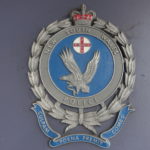Defamation Law: Naming and Shaming Suspected Thieves.

Shopkeepers are engaged in an ongoing battle with shoplifters, who pilfered a whopping $2.4 billion from retailers in 2013, despite cutting-edge technologies such as CCTV cameras, advanced security tags and alarm systems.
Frustrated with shoplifters, some store owners are creating in-store ‘walls of shame’ depicting photos of people label as thieves or, in other cases, sharing photos of suspects on social media.
The NSW Police Force has warned that such actions could land store owners in hot water, potentially exposing them to lawsuits for defamation or even criminal charges. Police say that the job of punishing thieves should be left to law enforcement through criminal infringement notices (for amounts of less than $300), or to the courts.
Defamation
Defamation involves disseminating false information, images or photographs that harm another person’s reputation and character. In Australia, defamation can come under civil or criminal law.
Civil
Where a defamation action is brought under civil law, the affected person (‘plaintiff’) may seek monetary ‘damages’ from the defendant – as well as other civil remedies, such as an ‘injunction’ to cease the conduct.
For a civil defamation action to succeed, the plaintiff will need to three things on the ‘balance of probabilities’:
- That the communication was published to a third person;
- That the communication identified the plaintiff; and
- That the communication was ‘defamatory’; meaning that it harmed the plaintiff’s reputation, held the plaintiff up to ridicule, or led others to shun and avoid the plaintiff.
Store owners who cannot establish that a suspect has committed an offence expose themselves to civil liability under defamation laws.
Posting information that identifies a “criminal” on social media sites like Facebook can be dangerous, with media lawyer Jamie White saying:
‘If a person posts material via social media that identifies a person and the material has the capability of lowering the reputation of that person in the minds of others, then allegations of defamation may follow…It does not matter if material is published via social media as any material made available online will be a ‘publication’ for the purpose of defamation law.’
Criminal
Defamation may also amount to a criminal offence under section 439 of the Crimes Act 1900 (NSW).
That section says that any person who publishes defamatory material about another knowing that information to be false, and with the intention of causing serious harm or being reckless about whether such harm could be caused, faces a maximum penalty of 3 years imprisonment, and/or a fine of $33,000.
Case Studies
Some shopkeepers have already paid a heavy price for naming and shaming suspected thieves.
In the UK, the operators of one shop were forced to cough up 50,000 pounds after placing a photo of Irish man Karl Morrison in a window, alongside the words ‘Attention Shoplifters.’ Mr Morrison asked the shop owners to remove the photo, but they refused. Word of his actions spread through the small town – and, as a result, Mr Morrison found it obtain employment or accommodation.
However, the decision to award damages was overturned on appeal after the Irish High Court found that certain evidence presented in his case lacked credibility.
Meanwhile in Australia, a case involving one of our biggest supermarket giants shows just how easy it is to defame someone.
In 2013, Sydney artist Philip Clarke was awarded $50,000 in damages after the manager of Coles in Lane Cove accused him of stealing prawns.
The problem arose when Mr Clarke purchased prawns from the seafood section – and upon realising he needed more, returned to the counter and asked the attendant to top the bag up.
In a very public verbal showdown witnessed by shocked customers, the manager, Shane Tatosian, along with other shop assistants, accused Mr Clarke of eating and stealing prawns – actions which Mr Clarke alleged pushed him ‘to the point of terrible disillusionment, depression, [and] feeling that this was the way Sydney had become now.’
The Court of Appeal held that verbally accusing Mr Clarke of stealing constituted ‘publishing’ a communication – and that the shop manager’s actions were indeed defamatory.
But despite the risks, some owners are intent on continuing to name and shame suspects.
Supermarket owner Luke Webster says claims to have had great success ‘naming and shaming’ thieves, telling the media that he only posts photos if ‘confident’ they have offended. According to Mr Webster, the approach has delivered great results:
‘We’ve had people, neighbours, tell parents and parents will bring their kids up and make them pay for the item, and then we’ve covered up their picture … and then told them you’re banned from the store.’
It seems that despite the risks, some store owners are prepared to take the law into their own hands in an attempt to protect their livelihoods.






